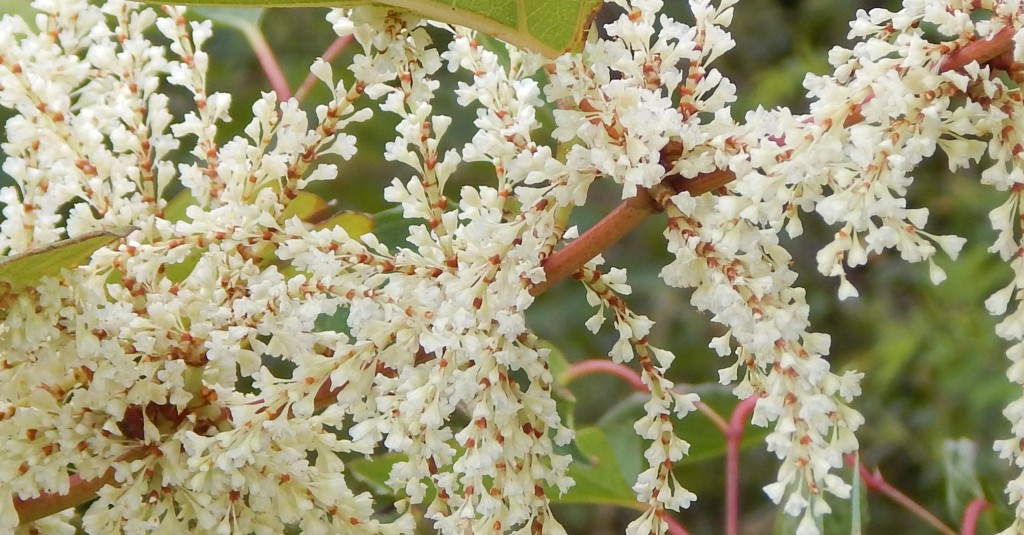
[299] Reynoutria japonica, Japanese Knotweed
Introduction
Reynoutria japonica, also known as Fallopia japonica or Polygonum cuspidatum, is one of the most unwanted invasive plants in the UK, known as Japanese Knotweed, Asian Knotweed, Fleeceflower, Himalayan Fleece Vine, Billyweed, Monkeyweed, Monkey Fungus, Elephant Ears, Pea Shooters, Donkey Rhubarb, American Bamboo, Mexican Bamboo and many other names across the World. I will stick to Japanese Knotweed.
It is a close relative of [143] Bukhara Fleeceflower (which also has many names and scientific synonyms) and it is sometimes confused with the equally invasive [185] Himalayan Balsam.
Several other plants in the related genera Reynoutria, Fallopia, Persicaria and Polygonum are called Knotweeds.
Taxonomy
Kingdom – Plants
Division – Vascular Plants
Class – Angiosperms (Flowering Plants)
Order – Caryophyllales
Family – Polygonaceae
Genus – Reynoutria
Scientific Name – Reynoutria japonica
Scientific synonyms – Fallopia japonica; Polygonum cuspidatumand about a dozen others.
Name
The genus Reynoutria was defined by Maarten Houttuyn in 1777 in honour of someone called Herr von Reynoutre who had been reported to have done a great deal of service to botany.
Description
It has rapidly growing red bamboo-like stems and large green oval leaves.
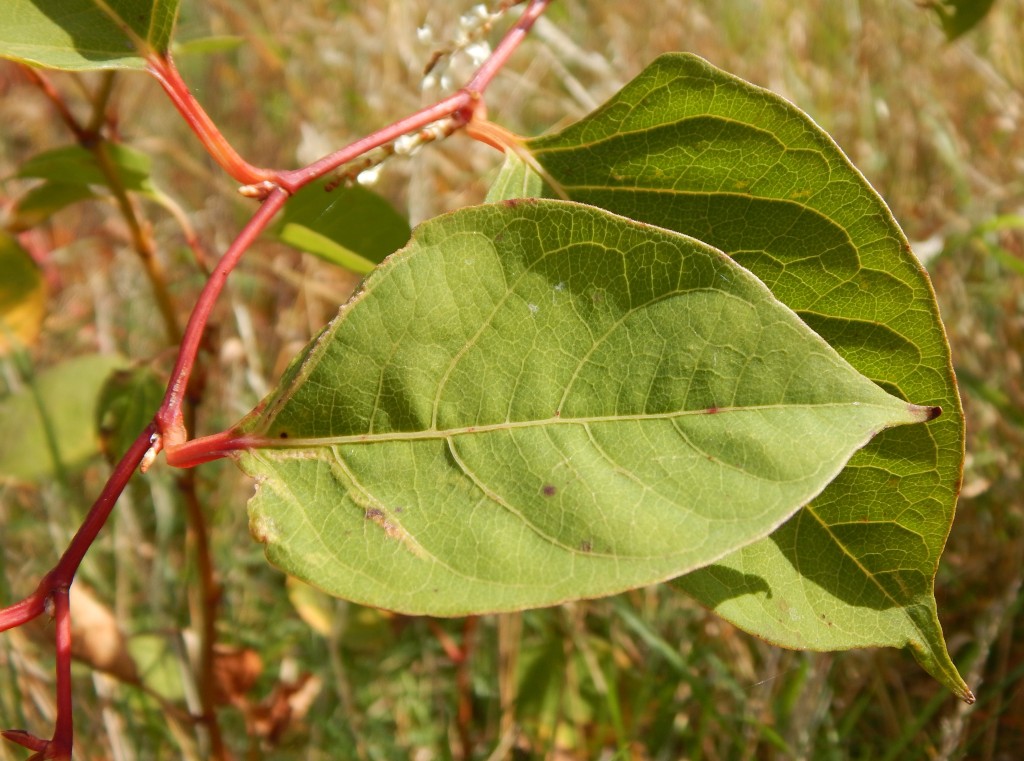
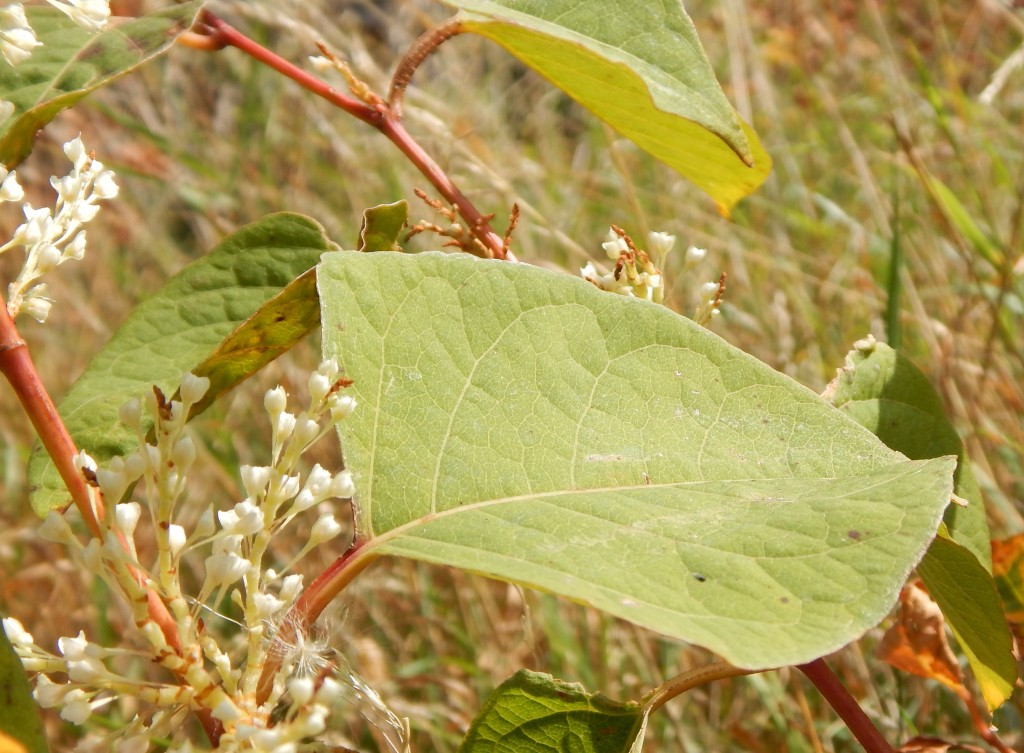
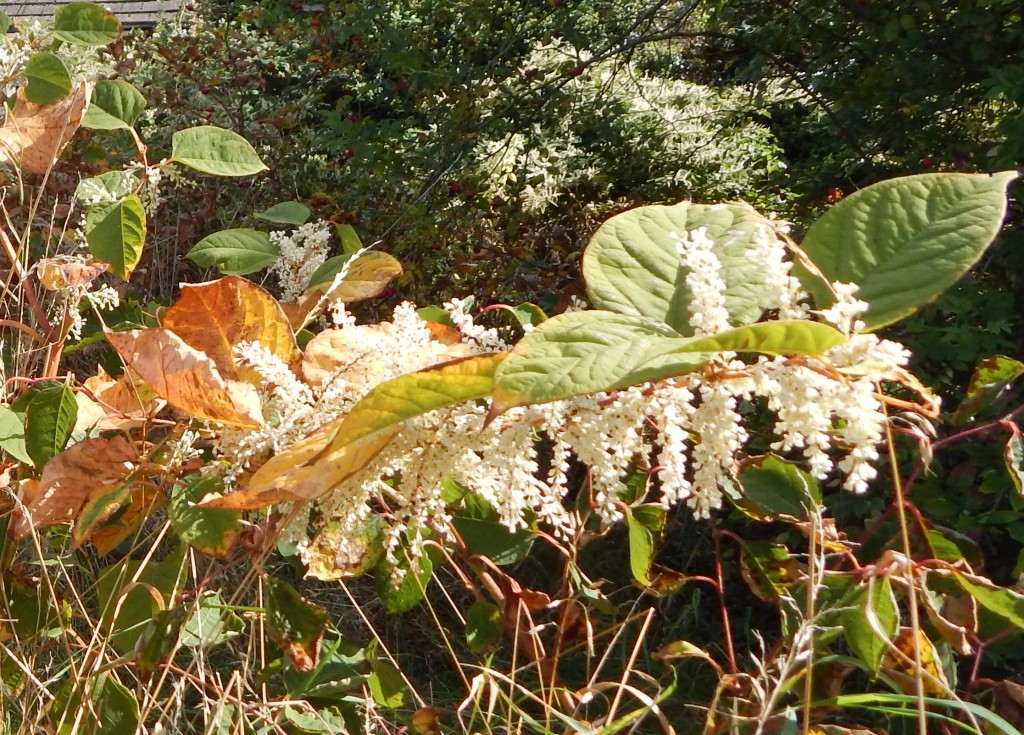
The masses of white (or light cream) flowers are similar to those of Bukhara Fleeceflower.
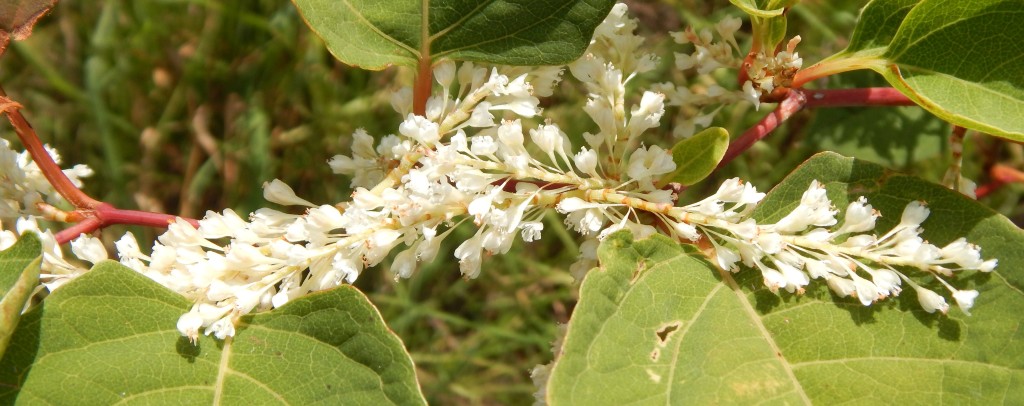


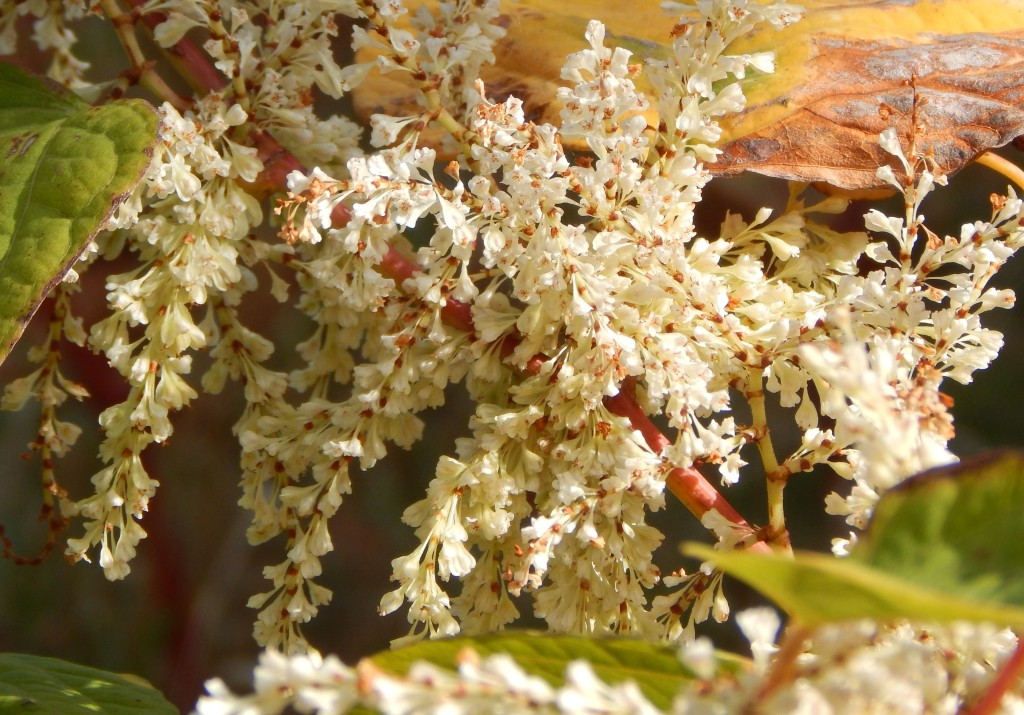

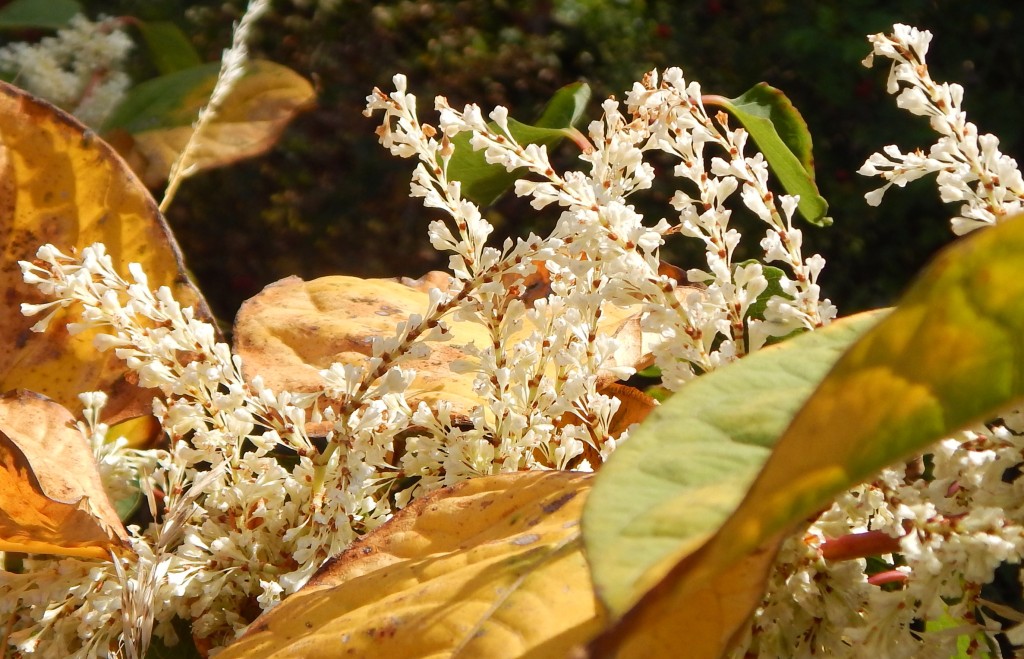
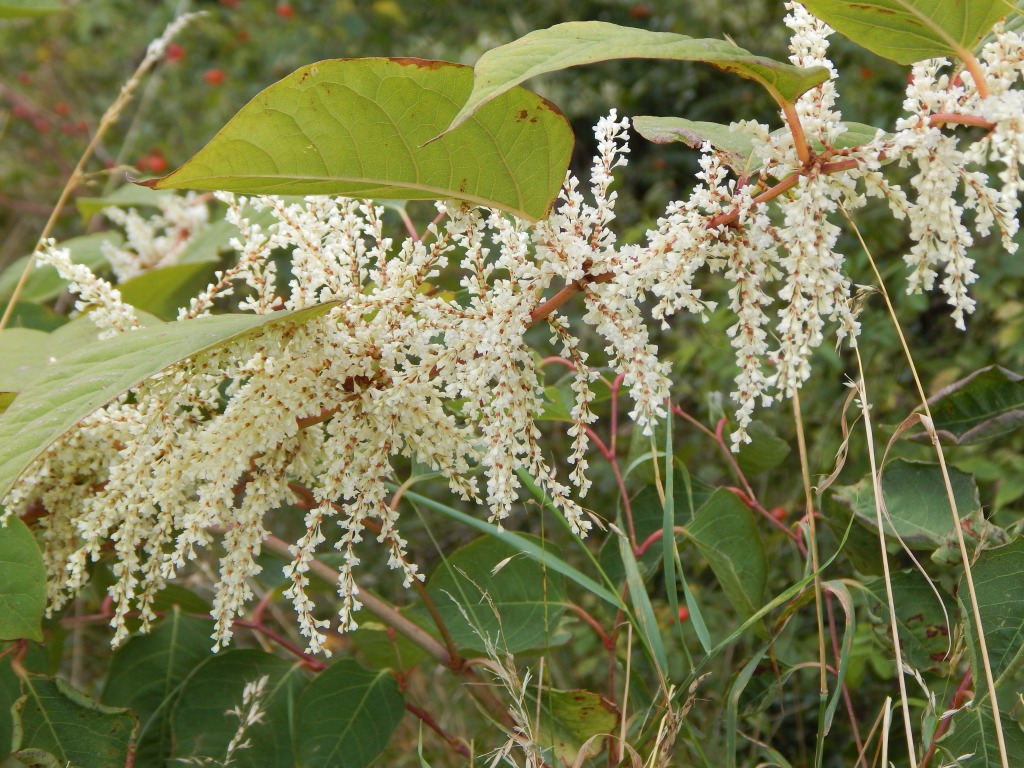
Wikipedia say very little about the plant but much more about its invasive nature. It can colonize riverbanks or roadside verges, tolerates a wide range of soil conditions and has extensive roots with rhizomes. Roots can extend seven metres horizontally and three metres deep and when cut down the plant will resprout vigorously from its roots. The roots can damage buildings, flood defences, roads and retaining walls and the plant overgrows and shades out buildings and other vegetation. It may need repeated application of selected herbicides for several years for successful eradication.
In the UK there have been legal problems with banks and building societies refusing mortgages on houses where Japanese Knotweed has been found in neighbouring gardens.
Habitat and use
Japanese Knotweed is native to Japan, Korea and parts of China.
It grows widely in Japan and is foraged as a wide vegetable.
Japanese Knotweed was originally introduced as an ornamental plant but escaped naturalized plants are amongst the most unwanted invasive weeds in the UK and in many other countries.
I always check species on the RHS (Royal Horticural Society) web pages and almost always find some cultivated varieties. A few other species of Reynoutria are available in cultivated forms but the RHS now describes it as follows:
Japanese knotweed (Fallopia japonica) is a weed that spreads rapidly. In winter the plant dies back to ground level but by early summer the bamboo-like stems emerge from rhizomes deep underground to shoot to over 2m (7ft), suppressing all other plant growth. Eradication requires determination as it is very hard to remove by hand or eradicate with chemicals. New legislation now covers its control.
Other Notes
When I discovered this plant, I photographed it as soon as I could because I knew it was unwanted. Within two days it was dying, presumable after extensive application of weedkillers.
See also
As noted above Russian Vine is a close relative. (That’s another name for Bukhara Fleeceflower.)
